David Stairs
I grew up in a subdivision of a crossroads-small town named Mattydale, N.Y. In the early 20th century the area had been comprised of dairy and vegetable farms that supplied the city of Syracuse. In the 1920s the farmers sold out, and from then through the 1950s suburbia sprouted where carrots and cabbages once had grown. The earlier developments were diverse, with homes of various ages occupying the same block. Across from my parent’s house, built in 1926, was a Cape Cod constructed in the ’50s, itself sitting on land that once was a chicken farm adjoining the farm house next door. In my early college days I knew friends who had grown up in Levittown, N.Y. I didn’t think about it much at first, I mean, what’s in a name? Only later, when I came to know why Levittown existed did I begin to question its sanity. The late ’40’s were all about developing affordable living spaces for returning GIs and the families they would raise. John Entenza’s Case Study House project in California was one approach, small, select, specially designed. Levittown, the mass-produced racially discriminatory version, was another. Both projects were constructed upon a concrete slab using pre-fab materials, but there the similarities ended
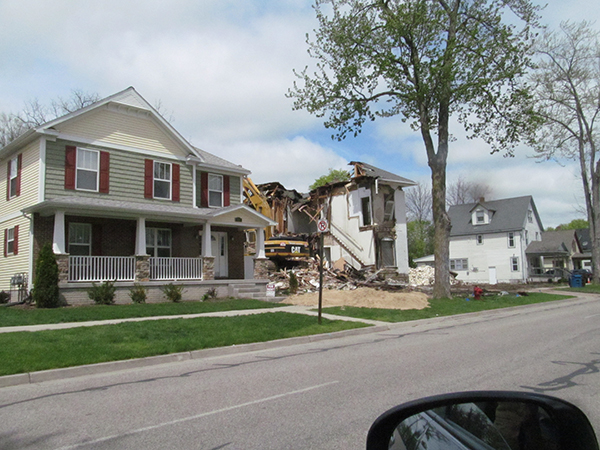
Rapid tear down of existing structure in early June…
What got me thinking about quick-and-dirty design was some of the activity in the town where I currently live. Mt. Pleasant, Michigan is a college town, subject to the ebb and flow of large numbers of nomadic students. As the university has grown, so has the community, the two being fairly interdependent. Lots of old residential housing near campus has been converted to student use and, over the years, some of these structures have gotten a little rough.
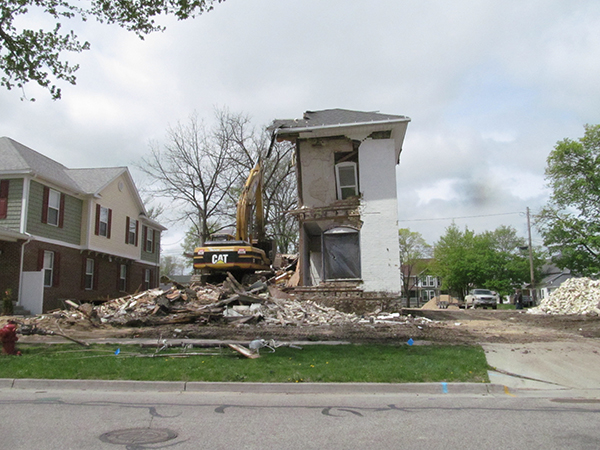
…in this case an old brick house
A local builder has taken it upon himself to restructure these neighborhoods. Rezoned from residential to multiple use in the 1980s, several recent projects have been approved that remove old houses and substitute for them with pre-fab replacements. This process is very rapid. A vintage house, even a brick one, can be torn down in a couple of days and be built over and reoccupied within eight weeks.
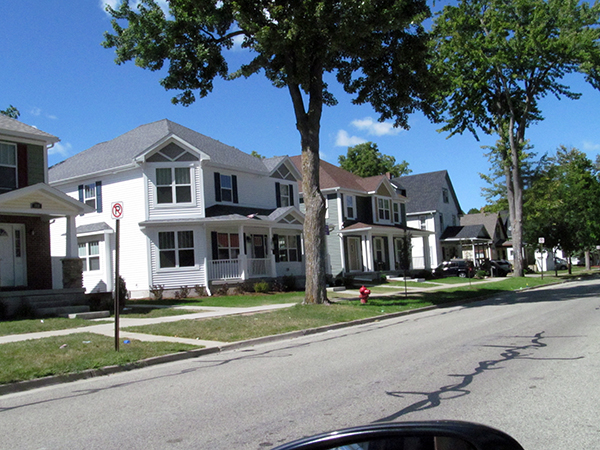
By August, a fully occupied cookie-cutter replacement
In its heyday, Levittown added 30 houses per day. Nothing like that is happening here. But the formal mediocrity, and rapid construction techniques— every house is raised upon a pre-fab tilt-up concrete slab basement— results in the loss of architectural diversity, replaced by predictable variation in surface texture and exterior ornament.
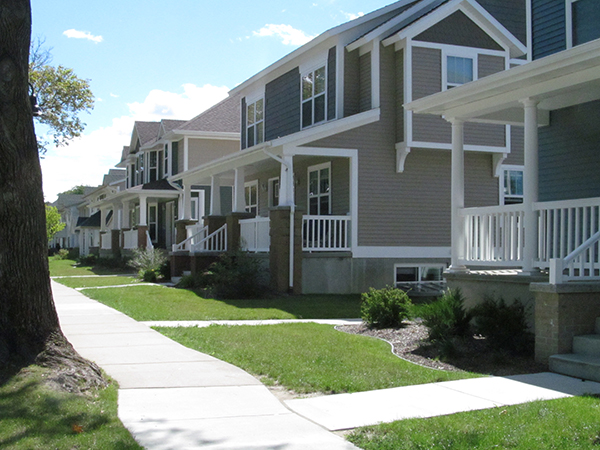
Whole blocks have been “terraformed” in this manner
This development approach is being pursued in other parts of town with a totally different end result. In areas outside the city limits and, therefore, beyond taxation, local professionals are erecting office parks. One particular project specializes in medical offices. These structures, one story brick facades with peaked, shingled roofs surrounded by parking lots and cheap landscaping, are representative of rampant design banality. They suck tenants out of previously occupied offices, creating a critical mass of mediocrity that can best be described by classic theories of sprawl.
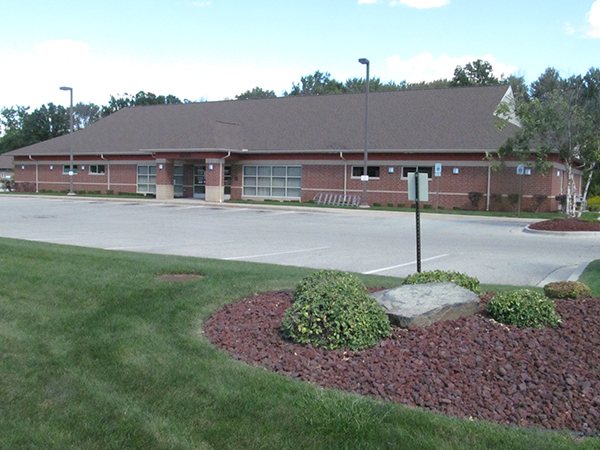
Sub-urban professional plazas have conceptually much in common with the rapid replacement houses
The economic forces that result in the mushrooming of these developments, professional overcrowding, aging infrastructure, and the desire to own one’s own building, are not different from the factors that motivated the Case Study House project, but the results are distinctly different. Where the Case Study Houses were designed by people like Charles Eames and Richard Neutra, the structures I’ve described are designed by a latter-day Alfred Levitt— cheap, yes, by virtue of their low-end materials. And cheaper still, by virtue of their low-end design qualities. It’s strictly Lowest Common Denominator architecture.
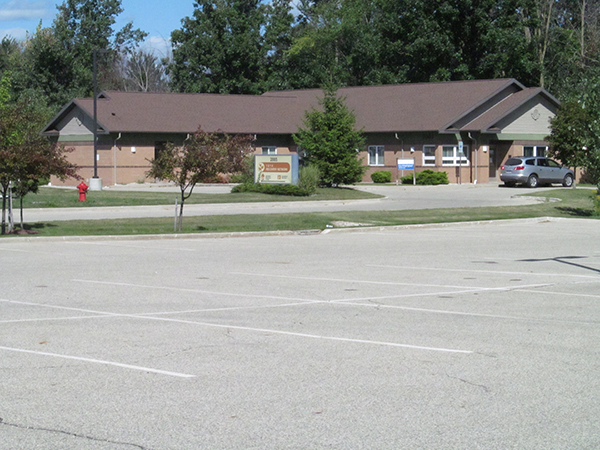
David Stairs is the founding editor of Design-Altruism-Project.











Leave a Reply
You must be logged in to post a comment.